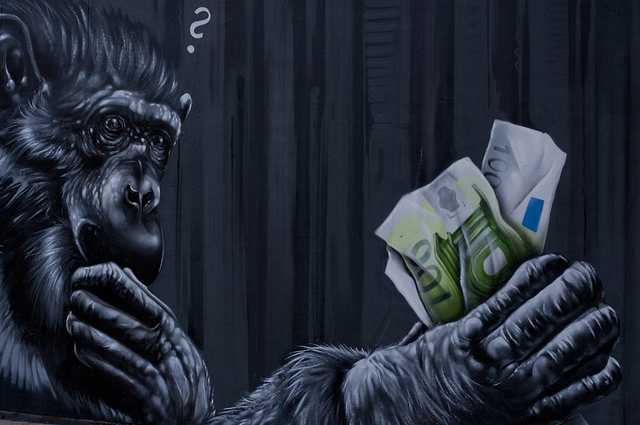
Art by Lieven Van Melckebeke
As I mentioned here on the blog a couple of weeks ago, a growing number of us on the HBG team are reading David Callahan’s latest book, The Givers; Wealth, Power, and Philanthropy in a New Gilded Age, and we meet weekly to talk about the latest chapter we’ve read.
Our discussions start with the book but we usually veer into the news of the day, pulling in observations from relevant and related articles from the New York Times, the Stanford Social Innovation Review, HistPhil, and more.
Last week we talked about chapter three, titled “Grandmasters” which seems particularly appropriate for these times. Callahan talks about billionaire investor-donors and their interests and motivations for giving, from their personal interests to their political giving on both the right and left sides of the political spectrum.
It was timely because, the week previously you will remember is the week that we as a nation withdrew from the Paris Agreement. It was also the week that there was an announcement that 14 new individuals and couples had signed onto The Giving Pledge. Some of the Pledgers were also covered in this chapter, so our discussion swirled around the Pledge, these philanthropic “Grandmasters,” and their response to the Paris withdrawal.
In case you haven’t been following it, the Giving Pledge (GP) is much more than just a nice letter sent from a billionaire philanthropist to Bill and Melinda Gates, although it does include that. They’re fascinating reading for those of us in fundraising. Each of the Pledgers’ letters tells a personal story of their commitment to philanthropy and how they came to the decision to give away at least half of their fortunes. Many of the letters talk about their philanthropic priorities and why those causes are important to them. Some of them detail the individual or couple’s entire personal or career biography.
But The Giving Pledge is much more than that.
The Pledge is an ante on the felt to join the most elite – and most powerful – multinational wealth-based club in the world. These are the nearly 500 billion pound dollar gorillas: in business, in society and political circles, and in their philanthropy. Their leverage is massive, and it’s growing.
With these 14 new signers the club now has 169 members from 21 countries with a combined net worth of over $840 billion.
So if you halve that $840B number you have $420 billion that they’ve said they will give away.
[And just for fun context, that’s slightly more than the GDP of Norway, and those people are sitting on free oil. It’s also 38 times the amount of the Ford Foundation endowment. The Ford Foundation.]
The GP isn’t just a virtual promise – it’s an in-person conference and more
In addition to informal meetings throughout the year that the Pledgers may have, Bill and Melinda Gates also host an organized annual two-day conference that brings all of the Pledge signers together, where they discuss wealth, philanthropy, and potential philanthropic opportunities.
According to a press release posted last month, this year’s conference provided Pledgers “with the opportunity to hear from outside experts and learn from each other about how to give effectively across a range of issues. Topics discussed at this year’s annual gathering included criminal justice reform, early childhood education, refugee aid, public health, and poverty alleviation.”
One could do an awful lot with that $420 billion to spend. 169 separate Pledgers with their own separate giving agendas? Well, still a lot.
But not as much as they could do as one.
What if, as a gradual result of these gatherings, this group of $420 billion giving gorillas decides to troop together to solve the big issues that they all do agree on, one by one?
That is exactly the kind of thing that makes The Givers author David Callahan very nervous. He straddles a very wobbly fence between delight that the world’s needs are being addressed by wealthy people who care, and fear that those same philanthropists wield too much power over the causes they choose (and I mean that both ways – by their choice of cause and by the power they potentially wield over the implementation and direction of their largesse).
I wonder if a question like this one has been floated at a GP conference:
“Just how much would it cost to figure out how to deliver cheap and reliable clean energy solutions to everyone on the planet?”
What if the Pledgers decided to pool their half-fortunes to solve the world’s most intractable problems? What if they became the world’s largest collaborative giving circle?
